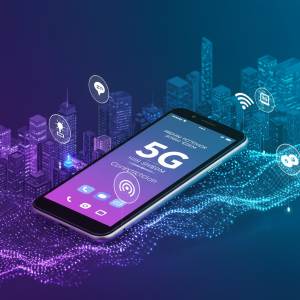The Mobile Black Market: What You Need to Know

The mobile phone industry generates over $500 billion annually, but lurking beneath this legitimate market exists a shadowy counterpart that most consumers never see. The mobile black market represents a complex ecosystem of stolen devices, counterfeit parts, and illegal trading networks that impacts millions of smartphone users worldwide.
Understanding how this underground economy operates isn’t just academic curiosity—it directly affects your wallet, your security, and your next phone purchase. Whether you’re buying a used device, selling your old phone, or simply want to protect yourself from fraud, knowledge of the mobile black market helps you make smarter decisions.
How the Mobile Black Market Operates

Stolen Device Networks
Professional theft rings represent one of the most organized aspects of the mobile black market. These operations typically target high-value smartphones through coordinated efforts at retail locations, during shipping, or through street-level theft. Once acquired, stolen devices move through sophisticated networks that quickly transport them far from their origin points.
The speed of these operations is remarkable. A phone stolen in New York City can appear for sale in another state within 24 hours, often with altered serial numbers or other identifying information removed or modified. This rapid movement makes recovery extremely difficult for both individuals and law enforcement.
Counterfeit Manufacturing
Beyond stolen devices, the mobile black market thrives on counterfeit smartphones and components. These fake products range from obvious knockoffs with misspelled brand names to sophisticated replicas that closely mimic genuine devices. Many counterfeit phones contain substandard batteries, processors, and other components that pose safety risks to users.
Counterfeit parts also find their way into repair shops, where unsuspecting customers receive fake screens, batteries, or other components during legitimate repair services. These parts often fail prematurely and may void manufacturer warranties.
Common Mobile Black Market Activities
IMEI Manipulation
The International Mobile Equipment Identity (IMEI) number serves as a unique identifier for mobile devices. Black market operators frequently alter or clone these numbers to make stolen phones appear legitimate. This practice, known as IMEI washing, allows stolen devices to bypass carrier blacklists and function normally on cellular networks.
Some criminals use IMEI cloning, where they copy the identifier from a legitimate device and apply it to a stolen phone. This creates confusion in carrier databases and makes it difficult to track stolen devices effectively.
SIM Swapping Operations
While not exclusively a mobile black market activity, SIM swapping often involves illegal networks that specialize in mobile phone fraud. These operations target high-value individuals by convincing cellular carriers to transfer phone numbers to new SIM cards controlled by criminals.
The mobile black market provides the infrastructure for these scams, including fake identification documents, insider information from carrier employees, and sophisticated social engineering techniques.
Unlocking and Modification Services
Legitimate phone unlocking services exist, but the mobile black market offers similar services for clearly stolen devices or phones obtained through fraudulent means. These operations often advertise through encrypted messaging apps or underground forums.
Some black market services specialize in removing carrier locks, disabling GPS tracking, or modifying software to hide a device’s true origin. These modifications make stolen phones more valuable and harder to trace.
The Economics Behind Mobile Black Markets
Profit Margins and Pricing
The financial incentives driving the mobile black market are substantial. A stolen iPhone that retails for $1,000 might sell for $200-400 on the black market, providing significant profit margins for thieves while offering attractive prices for buyers who may not realize they’re purchasing stolen goods.
These price differences create a persistent demand that fuels continued criminal activity. Budget-conscious consumers often find black market prices irresistible, especially for premium devices that would otherwise be unaffordable.
International Trade Routes
Mobile black market operations frequently involve international shipping and trade. Stolen phones from developed countries often end up in markets where they’re less likely to be identified or where law enforcement cooperation is limited.
Container shipments, international mail systems, and personal courier networks all play roles in moving devices across borders. Some operations specifically target phones for export, knowing that distance from the theft location reduces the chance of recovery.
Risks of Participating in Mobile Black Markets
Legal Consequences
Purchasing stolen mobile devices, even unknowingly, can result in serious legal problems. In many jurisdictions, buyers can face charges for receiving stolen property, regardless of whether they knew the items were stolen. The burden of proving innocence often falls on the purchaser.
Law enforcement agencies increasingly use sophisticated tracking methods to identify stolen devices and their current owners. Being found in possession of a stolen phone can lead to criminal charges, civil liability, and the loss of money spent on the device.
Security and Privacy Risks
Black market phones often contain malicious software, compromised security systems, or hidden backdoors that criminals use to access personal information. These devices may continue sending data to their original operators or contain keyloggers that capture passwords and sensitive information.
Additionally, phones obtained through black market channels rarely receive legitimate security updates, leaving users vulnerable to known exploits and security vulnerabilities.
Financial Losses
Beyond the initial purchase price, black market phones often result in additional financial losses. Carriers frequently blacklist stolen devices, rendering them unusable on cellular networks. Insurance claims may be denied, and any money spent on accessories or services becomes worthless.
Counterfeit devices typically have much shorter lifespans than genuine products, requiring replacement sooner than expected. The lack of warranty coverage means any repairs must be paid out of pocket.
Protecting Yourself from Mobile Black Market Fraud
Verification Before Purchase
When buying used phones, always verify the device’s legitimacy through multiple methods. Check the IMEI number against carrier blacklists and stolen device databases. Examine the phone’s physical condition for signs of tampering or replacement parts.
Request original purchase receipts, warranty information, and proof of ownership from sellers. Legitimate sellers should readily provide this documentation, while criminals often make excuses or refuse such requests.
Safe Transaction Practices
Conduct transactions in public places, preferably at police stations that offer safe exchange zones for online sales. Avoid deals that seem too good to be true, as they often involve stolen or counterfeit devices.
Test devices thoroughly before completing purchases, including checking all functions, accessing settings menus, and verifying that the phone can connect to cellular networks. Be wary of sellers who rush transactions or discourage thorough testing.
Reporting Suspicious Activity
Report suspected black market activity to appropriate authorities, including local law enforcement, carrier fraud departments, and relevant consumer protection agencies. Many agencies rely on public reports to identify and investigate criminal networks.
Document suspicious listings, conversations, or transactions that might indicate black market activity. This information helps law enforcement track criminal operations and prevent future victims.
The Future of Mobile Black Market Enforcement
Law enforcement agencies worldwide are developing new strategies to combat mobile black market operations. Enhanced international cooperation, improved tracking technologies, and stronger penalties for mobile phone crimes all contribute to increased enforcement efforts.
Manufacturers continue developing better security features, including more sophisticated device tracking, improved encryption, and hardware-based authentication that makes stolen phones less valuable to criminals. These technological advances gradually reduce the profitability of mobile black market operations.
However, as legitimate security measures improve, criminal organizations adapt their methods. The mobile black market continues evolving, requiring ongoing vigilance from consumers, manufacturers, and law enforcement agencies.
Making Informed Mobile Purchase Decisions
Understanding the mobile black market empowers you to make safer purchasing decisions and avoid becoming either a victim or an unwitting participant in criminal activity. The savings offered by black market devices rarely justify the significant risks involved.
Stick to authorized retailers, verified resellers, and thoroughly vetted private sellers when purchasing mobile devices. While legitimate options may cost more initially, they provide security, warranty protection, and peace of mind that black market alternatives cannot match.
Stay informed about current scams, emerging threats, and best practices for mobile device security. The mobile black market will continue evolving, but educated consumers remain the best defense against these criminal operations.





